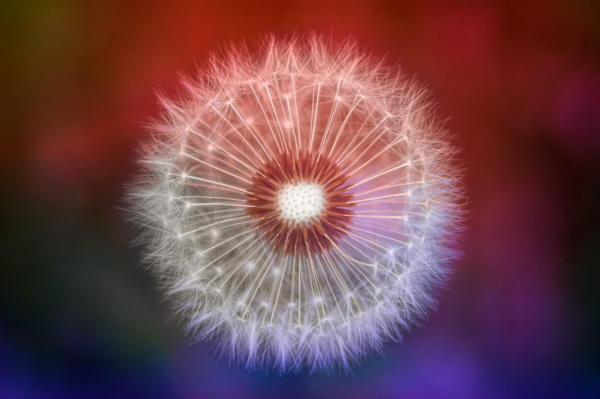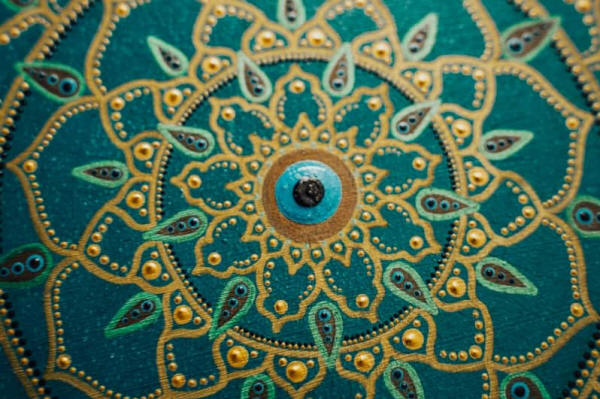|

by
Mateo Sol
June 26,
2021
from
LonerWolf Website

"Become whole"
- "Seek for wholeness" - "Experience more wholeness"
What does this mean?
We've mentioned wholeness a lot on this website.
And if you're a spiritual
seeker, soul searcher, or self-growth veteran, you would've heard
this term a lot.
But what does it
actually mean?
Is it another whimsical, idealistic concept?
Or is it actually
something possible to experience?
My answer is that yes,
wholeness is actually at the core of the spiritual path - and it's
tremendously important to learn about.
So if you're searching for something deeper, truer, and more
satisfying than what the material world can ever offer you, this is
the place to be.
What is
Wholeness?

Perhaps the simplest way to put it is that wholeness is an
experience, a process, a journey, and also a trait of your innermost
Self.
We are dealing with the world of paradox here where two seemingly
opposing states can both be true.
As humans, we are innately flawed, imperfect, and 'broken.' Yet at
the same time, we contain within us a deeper essence (that goes
beyond
the ego) that is whole and
complete.
Can you see the paradox here?
Wholeness is a trait
of your innermost Being and therefore, it's also an experience
you can have in moments of silence, stillness, contemplation,
and present moment awareness.
Furthermore, wholeness is
a process and therefore a journey because in order to experience it,
we need to slowly dismantle the layers shrouding that inner Whole
Core.
New Age vs.
Psychospiritual
→
Two Ways to Understand Wholeness

'Psychospiritual' is a word that means psychology and spirituality
combined together - it's the main approach we use here on lonerwolf.
'New Age' refers to a broad
spiritual movement that is defined by an eclectic range of
metaphysical practices that focus on positive feelings of love and
light.
Both approaches have different ways of seeing wholeness.
The New Age sees
wholeness as an oceanic field of oneness. Take renowned mainstream
guru Deepak Chopra's perception,
Body, mind, spirit,
environment, relationships, social interactions are all one
wholeness, and you're a part of that one wholeness.
The emphasis is on inspirational positivity.
The psychospiritual
approach is a bit different in that it talks about creating unity in
our being.
To do this, we must
integrate the many often opposing parts of ourselves.
It's a pragmatic
approach.
Take depth psychologist Carl Jung's perception as an
example,
Wholeness is not
achieved by cutting off a portion of one's being, but by
integration of the contraries.
Which perspective is
true?
Both are valuable and in some sense true.
The New Age does rightly highlight the beauty of wholeness.
But it also neglects to focus on the hard, and often inconvenient
reality that we must put in some work to experience the cosmic
wonder of wholeness.
Jung called this inner work the process of individuation.
Individuation
is the Enchanted Door to Wholeness

If you can't tell already, Jung (who is a Sage at heart), has a lot
to say about wholeness.
Jung defines individuation as becoming a complete person...
I will try to explain
the term "individuation" as simply as possible.
By it I mean the
psychological process that makes of a human being an
"individual" - a unique, indivisible unit or "whole man."
As we can see,
individuation is a journey towards wholeness in which we create a
balanced relationship between our inner and outer worlds.
But how do we do this?
How to
Experience More Inner Wholeness (3 Paths)

There are no "7-steps-to-becoming-whole"...
This isn't a listicle. It can't be - that wouldn't do justice
to this sacred journey.
Wholeness is also not linear, it's a circular process.
We'll go back and
forth and in and out as we slowly dissolve the layers obscuring
our wholeness or Inner Light.
As I said previously,
wholeness is at the
center of the spiritual awakening journey.
To reconnect with
your wholeness isn't a side-project or fun hobby.
It's a commitment.
It's a calling that
arises from your heart and soul.
Here are a few main
psychospiritual practices you can incorporate into your life to
experience more inner wholeness:
1.
Embrace all sides of yourself through self-compassion (even and
ESPECIALLY the warty ones)

Connecting with the heart is at the core of finding (and
creating) inner wholeness.
As Dr. Rosenberg, a clinical psychologist writes,
We are
compassionate with ourselves when we are able to embrace all
parts of ourselves and recognize the needs and values
expressed by each part.
Practicing
self-compassion involves learning how to firstly practice
self-care and secondly learning how to love yourself.
The more you hone these habits, the more you can be gentle and
caring toward yourself.
Internal family systems - or 'parts work' - is another approach
you might like to explore.
Parts work
helps to unify buried, shunned, and traumatized parts of
yourself back into the Whole.
Ultimately,
self-compassion is the most powerful when it's applied to the
insecure, angry, jealous, grief-stricken, ugly, and embarrassing
parts of ourselves.
So get into the habit of saying "I love you," "It's okay," and
"I accept you" to even your most warty and flawed parts.
This heart work is
powerful medicine.
2.
Draw and meditate on mandalas

Mandala is a Sanskrit word for 'circle' and the circle is
an ancient shape that represents wholeness.
As author Jan Fries writes,
A mandala
is a map, a model of the world, a model of the mind, and a
powerful visual device to invoke specific consciousness
states.
Like sigils and
symbols, mandalas touch the deeper layers of the
mind.
The fact that
mandalas reach the deepest layers of our minds was something
well understood by psychologist-sage Carl Jung.
In his book 'Jung
and Shamanism in Dialogue - Retrieving the Soul, Retrieving the
Sacred,' C. Michael Smith explores how Jung
would use the mandala as a doorway into the psyche:
In the mornings
he would sketch a circle in his notebooks, a mandala... and
within it he would draw what he felt to be his inner
situation at the time...
Jung discovered
that through such drawings he could observe his own psychic
transformations from day to day.
Gradually it
began to dawn on Jung that the mandala is really a mirror of
the psyche in its totality.
Jung was also known
to incorporate mandalas into his psychotherapy practice with
patients.
Intuitively, I believe we can all sense that the mandala
represents wholeness. It is an image that is both fractured and
whole at the same time - just like us human beings.
So why not try drawing your own mandala?
It's simple.
Just get a piece
of paper and a pencil.
There's no need
to get fancy with colors if you don't want to.
Here's a simple
Youtube tutorial:
If drawing a
mandala intimidates you, find a mandala image to meditate
on. There are many freely available mandala images on the
internet.
Make this into a
daily practice and journal about what you experience and feel.
3.
Hold hands with the devil inside of you

We're all imperfect and therefore we all carry a 'dark side.'
This dark side is often referred to as
the shadow
self because
it's hidden from us, buried within the unconscious mind, and
suppressed from everyday awareness.
The tendency of New Age spirituality is to deny the
shadow, seeking to focus only on spiritual ascension.
But denying the
shadow only makes it grow larger and angrier, like the lava
in a volcano about to erupt.
It's for this reason
that I tend to favor the union of psychology and spirituality
(or psychospirituality) which, amazingly enough,
willingly reaches out to the shadow.
To experience more inner wholeness, we need to be able to
embrace all elements of our being.
Introducing psychological
exploration into our spiritual practice is, therefore, crucial
to moving toward this inner wholeness.
The psychospiritual approach that I advocate is inner work which contains three foundational
practices:
-
Self-love
-
Inner child
work
-
Shadow work
To hold the hand of
your inner devil you must first build a strong foundation of
self-love.
Otherwise, how can
you befriend your darkest shadows? You'll just end up
rejecting/hating them and fragmenting yourself even more.
Inner child work helps you to soothe and comfort your wounded
innocence so that you can feel safe enough to venture into the
dark.
And shadow work is the final step, allowing you to experience
more inner peace and opening a doorway to greater spiritual
growth.
Wholeness = Holiness

Did you know that wholeness and holiness are connected?
Holy comes from the Old English word hālig, which means
"whole, healthy, entire, and complete."
So to be whole means to be holy.
Wholeness is holiness - and this is why when we have a direct
experience of our wholeness it tends to feel like a mystical
experience of,
-
awe
-
gratitude
-
love
-
reverie
Love is the
Essence of Wholeness

What does every pathway to wholeness have in common?
Love...
Indeed, wholeness is a
byproduct of connecting with and living from the heart.
And it is this spiritual integration of the light and dark within us
that helps us to awaken our True Nature...
In the words of the Third Chinese Patriarch of Zen,
True Enlightenment
and wholeness arise when we are without anxiety about
non-perfection.
| 










